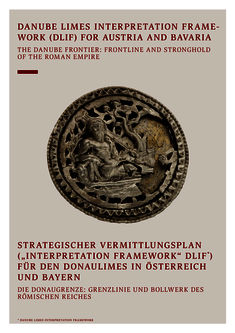BRIEF INFORMATION ON THE DEVELOPED STRATEGIC MEDIATION PLAN
("Interpretation Framework")
FOR THE DANUBBE LIMES IN AUSTRIA AND BAVARIA[1]
In Antiquity, the Danube border in Austria and Bavaria was an important part of the Roman Empire's approximately 5,000 kilometres of land and river borders. Both Hadrian's Wall and Antonine's Wall in Great Britain as well as the Upper German-Raetian Limes in Germany are already modules of a joint World Heritage Site "Frontiers of the Roman Empire". This should be extended in the coming years to include the sections along the Danube and Rhine Rivers in both Germany and the Netherlands.
As part of the preparation for the inscription of the Austrian-Bavarian Danube Limes, this strategic mediation plan ("Interpretation Framework") was drafted for the Danube Limes in both countries. It is an integral part of the management plan to be developed as part of the World Heritage application, but due to its recommendatory character, can also be used separately to sharpen the respective museum profiles and focus within the Roman museum landscape along the entire Austrian-Bavarian river border. Following English models, especially the "Interpretation Framework" for Hadrian's Wall, a transnational mediation strategy is being presented for Europe for the first time under a common guiding theme ("The Danube Frontier: Frontline and Stronghold of the Roman Empire").
Promoting understanding of the historical heritage and its protection, museums play a crucial role in communicating a largely invisible heritage site and its well-preserved monument substance as a World Heritage Site. This important function of museums and their socio-political significance are defined in the "Recommendation on the conservation and promotion of museums and collections, their diversity and their role in society" which was adopted by the UNESCO General Assembly on November 17, 2015.
The "Interpretation Framework" draws upon these recommendations and develops them further. The aim is to create an attractive and content-structured museum landscape along the Austrian-Bavarian Danube Limes that allows visitors to rediscover the theme of "Romans" time and again across a variety of locations. Further still is the added focus on raising awareness of the Danube Limes as a coherent cultural phenomenon in its entirety.
[1] Ch. Flügel/E. Kuttner et. al. (Hrsg.), STRATEGISCHER VERMITTLUNGSPLAN („INTERPRETATION FRAMEWORK“ DLIF) FÜR DEN DONAULIMES IN ÖSTERREICH UND BAYERN. DIE DONAUGRENZE: GRENZLINIE UND BOLLWERK DES RÖMISCHEN REICHES, 32.



